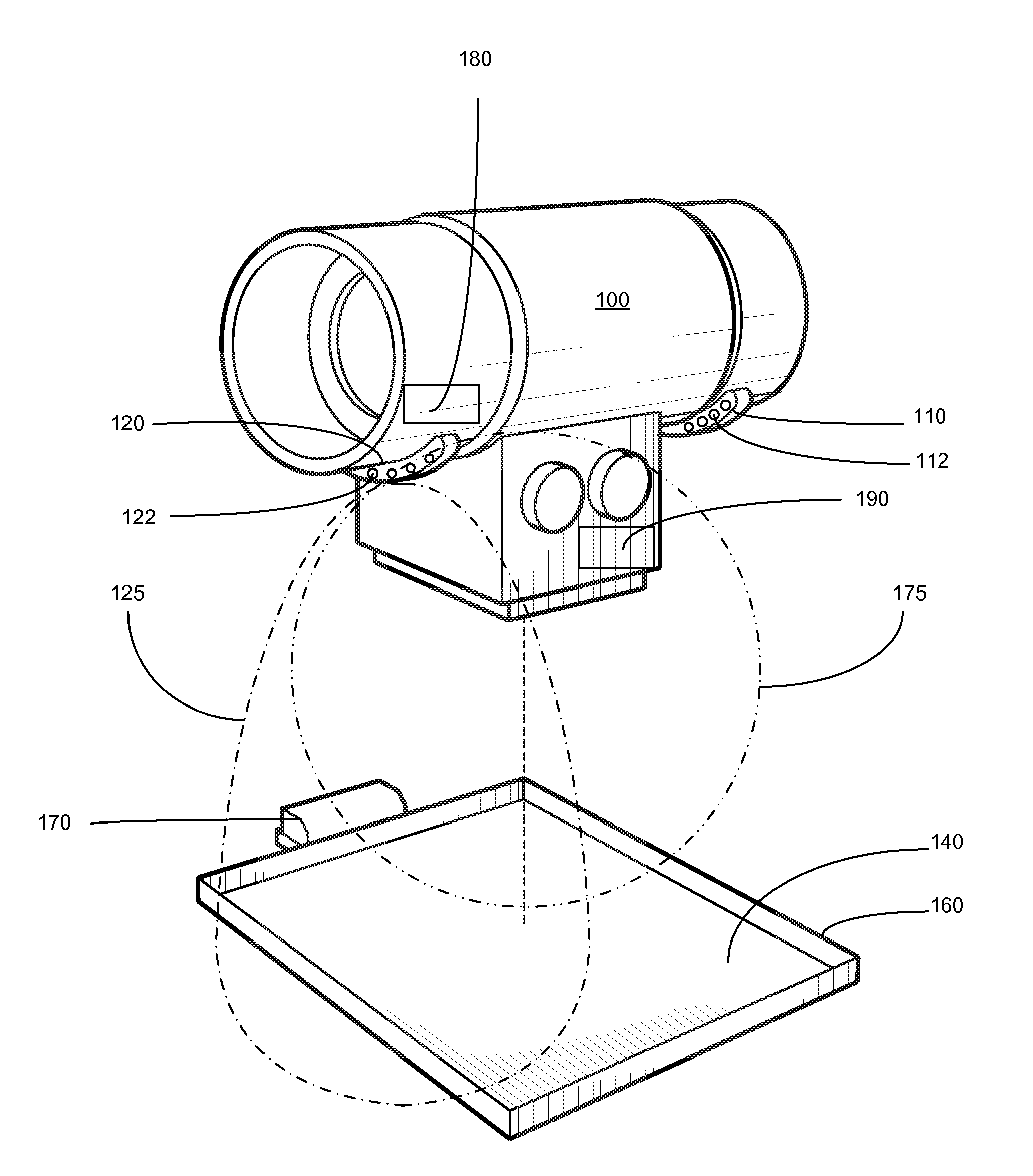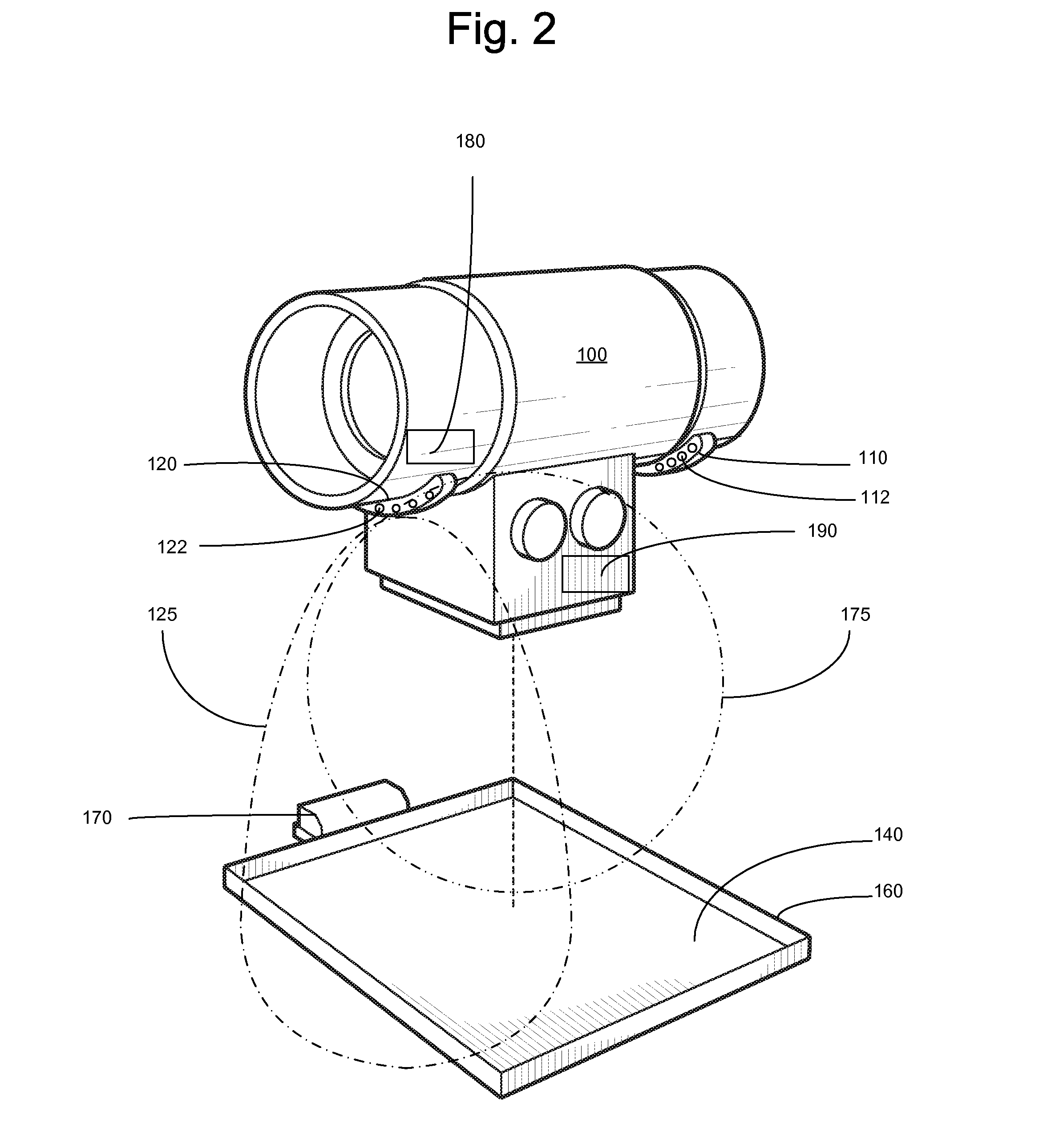Directional antenna system for wireless X-ray devices
a wireless x-ray and antenna system technology, applied in the field of wireless x-ray devices employing a directional antenna system, can solve the problems of physical constraints, not actual data, and the patient's orientation during the x-ray imaging procedure, and achieve the effect of low power
- Summary
- Abstract
- Description
- Claims
- Application Information
AI Technical Summary
Problems solved by technology
Method used
Image
Examples
first embodiment
[0025]In the invention, the directional antennae system only uses one directional antenna (either 110 or 120) that are attached to the body of the x-ray tube 100. The one directional antenna, 110 or 120, attached to the body of the x-ray tube 100, would transmit (send RF energy) towards the wireless x-ray detector 140. The transmitted RF signal from directional antenna 110 or 120 would be received by the single directional antenna 150.
[0026]As shown in FIG. 1, the directional antenna 120 has a primary transmission path 125. Additionally, the directional antenna 150 has a primary transmission path 155. The wireless x-ray detector 140 may be located on a panel 160 that is placed beneath the radiology patient. Further, the directional antenna 150 may be located on panel 160. The position of the directional antenna 150 may be for example, on the periphery of the panel 160, at such a location where a radiology patient would not block or otherwise interfere with the directional antenna 15...
second embodiment
[0040]In the invention, the directional antenna system uses one directional antenna (either 110 or 120) that are attached to the body of the x-ray tube 100. The one directional antenna, 110 or 120, attached to the body of the x-ray tube 100, would transmit (send RF energy) towards the wireless x-ray detector 140. The transmitted RF signal from directional antenna 110 or 120 would be received by the single omni-directional antenna 170.
[0041]As shown in FIG. 2, the directional antenna 120 has a primary transmission path 125. Additionally, the omni-directional antenna 170 has a primary transmission path 175 (an omni-directional antenna generates a general, radial in all directions, expanding transmission path). The wireless x-ray detector 140 may be located on a panel 160 that is placed beneath the radiology patient. Further, the omni-directional antenna 170 may be located on panel 160. The position of the omni-directional antenna 170 may be for example, on the periphery of the panel 1...
PUM
 Login to View More
Login to View More Abstract
Description
Claims
Application Information
 Login to View More
Login to View More - R&D
- Intellectual Property
- Life Sciences
- Materials
- Tech Scout
- Unparalleled Data Quality
- Higher Quality Content
- 60% Fewer Hallucinations
Browse by: Latest US Patents, China's latest patents, Technical Efficacy Thesaurus, Application Domain, Technology Topic, Popular Technical Reports.
© 2025 PatSnap. All rights reserved.Legal|Privacy policy|Modern Slavery Act Transparency Statement|Sitemap|About US| Contact US: help@patsnap.com



